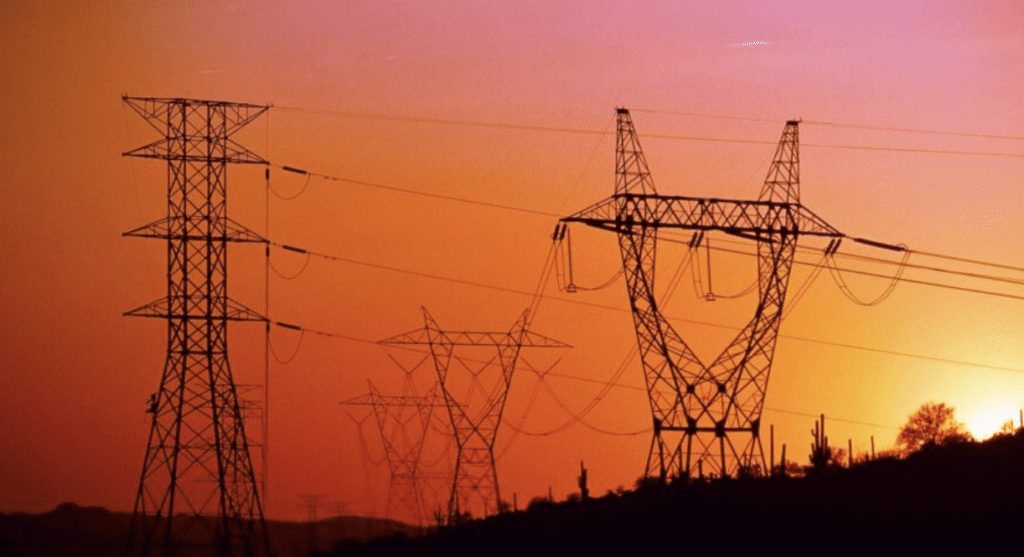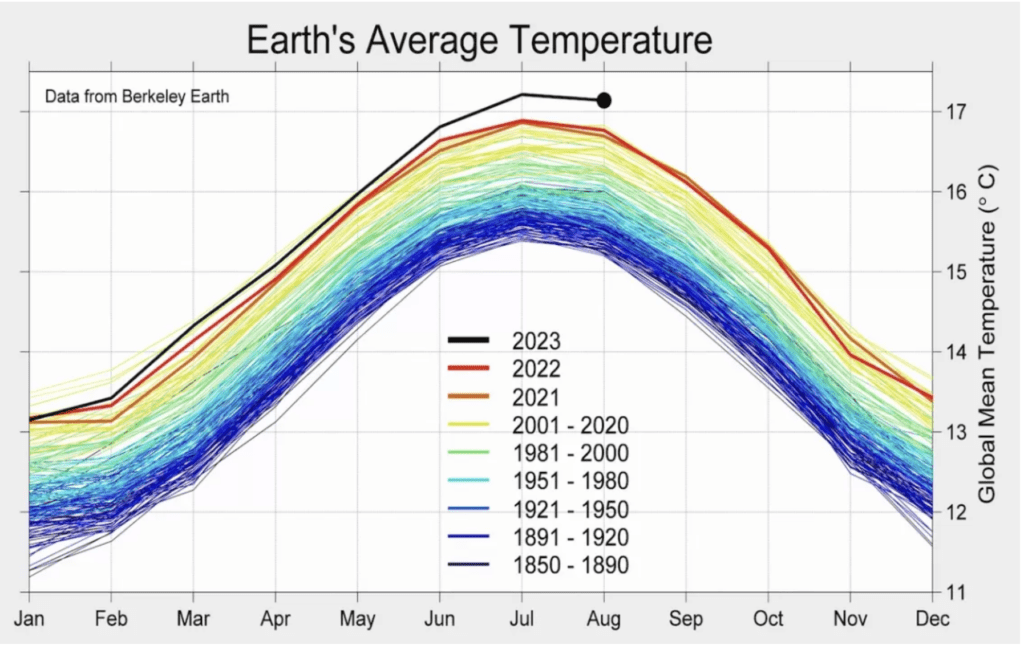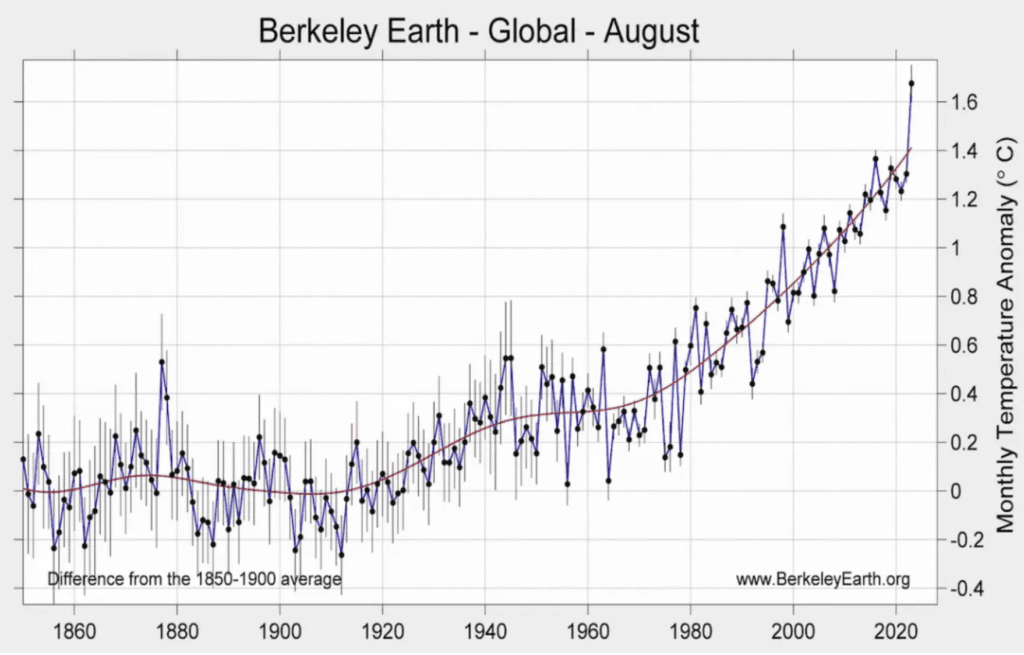Daniel Salzler No. 1221
EnviroInsight.org Seven Items September 29, 2023
—————Feel Free To Pass This Along To Others——————
If your watershed is doing something you would like others to know about, or you know
of something others can benefit from, let me know and I will place it in this Information .
If you want to be removed from the distribution list, please let me know.
Please note that all meetings listed are open.
Enhance your viewing by downloading the pdf file to view photos, etc.
The attached is all about improving life in the watershed.
If you want to be removed from the distribution list,
please let me know. Please note that all meetings listed are open.
Check our website at EnviroInsight.org
1. Biden-Harris Administration Announces Availability of $20 Million in Grants to Create Career Opportunities in the Water Workforce. September 25, 2023
Contact Information EPA Press Office ([email protected])
WASHINGTON (September 25, 2023) — The U.S. Environmental Protection Agency (EPA) is announcing the availability of over $20 million in grant funding to support training for workers who protect and treat our nation’s drinking water and provide critical wastewater services. Through the Innovative Water Infrastructure Workforce Development Grant program, EPA will support training and career opportunities in the water sector. With the Biden-Harris Administration’s historic investment in water infrastructure, growing and sustaining the water sector workforce is more important than ever for ensuring clean and safe water for generations to come.
“The Biden-Harris Administration is committed to Investing in America, and that means investing in the workers that build and operate our nation’s water systems,” said EPA Administrator for Water, Radhika Fox. “Our Innovative Water Infrastructure Workforce Development Grant Program supports local programs that help people get the training they need to enter the water workforce or the necessary upskilling to advance in their careers.”
Frontline workers at water and wastewater treatment utilities across the country are central to public health, environmental, and economic well-being in all communities, big and small. The water industry is facing wide-spread shortages of qualified workers due to expected retirements, needed investments in the nation’s infrastructure, and new technical and scientific skill sets required to operate and maintain these systems. Current estimates indicate that as many as one third of water workers will be eligible to retire within the next 5-10 years.

The focus of the Innovative Water Infrastructure Workforce Development Grant program is to build a strong pool of skilled and diverse workers in the water and wastewater utilities sector. This grant program supports collaboration among federal, state, and local governments and institutions of higher education, apprentice programs, labor organizations, high schools, and other community-based organizations to provide access to workforce opportunities and build career pipelines in the water sector. There are six program areas:
- Targeted internships apprenticeships for skilled water utility trades.
- Education programs designed for elementary, secondary, and higher education students.
- Regional industry and workforce development collaborations to hiring qualified candidates.
4..Leadership development, occupational training, mentoring, or cross-training programs that support career advancement.
5. Education and training programs designed for decentralized (septic) water workers to support public health for communities that
rely on private wells for drinking water or septic systems.
6. Training and development for workforce development programs that reduce greenhouse gas emissions and other air pollutants to
benefit disadvantaged communities.
7. Applications must be received by EPA by November 17, 2023.
Learn more about the Innovative Water Infrastructure Workforce Development Grant program.
2. Did You Know: The Number Of Breaths The Average Adult Takes Daily Are
When at rest ………………17,280 to 28,800
When exercising………..57,600 to 86,400 Pretty Amazing!
3. Survey: 66% of Americans Say Water Requires More Federal FundingThe American Business Water Coalition (ABWC), a national organization comprised of water-reliant businesses, has released a “U.S. Water Infrastructure Funding and Business Risks Survey,” examining voter opinions across a wide spectrum of water issues.
The survey focused on water issues such as water quality, federal infrastructure funding and perceived risk to U.S. businesses and local communities from potential water-related crises. A key finding of the ABWC survey showed that a large majority of voters – 79 percent of Americans – are more likely to vote for political candidates who support increasing funding for clean and reliable drinking water.
The survey was conducted independently by the American Business Water Coalition through SurveyMonkey® from Tuesday, August 29 through Friday, September 1, 2023. This poll is based on a nationally representative probability sample of 585 adults, age 18 or older. The study was conducted in English. Respondent data were collected for gender, political engagement, voting habits, partisan affiliation, Census region, and individual and household income.
ABWC says the survey results comes as many state officials, business, community leaders and experts from the water sector are expressing concern regarding proposed deep cuts to the Clean Water and Drinking Water State Revolving Funds (SRFs) and the adverse impact of Congressionally Directed Spending (CDS).
“It was important to conduct the U.S. Water Infrastructure Funding and Business Risks Survey and check in with U.S. voters after proposed spending legislation in Congress included historic, unprecedented cuts to federal funding for our nation’s water and wastewater systems,” said ABWC CEO Mae Stevens. “Americans understand the connection between cuts to water infrastructure funding and the health of their local economy. Our survey shows that voters want more, not less, water funding.”
When asked about the risk to local businesses, the ABWC survey shows nearly all U.S. voters in agreement that drinking water, wastewater and stormwater infrastructure are integrally linked to the business community and overall economic prosperity. More than 98 percent of respondents said it was important, very important, or extremely important for businesses to have access to clean water for routine services, operations and hygiene. This indicates uniform growing concern among voters that funding challenges for water utilities put businesses in America at risk, since economic growth depends on safe and reliable water. Source: Water Finance and Management
4. Dry Eye: From Hot And Dry In The Summer To “Cold” And Dry In The Winter, How To Prevent Dry Eyes From Happening.
7 Tips For Dry Eye Relief
Michelle Crouch
1 Eye Drops and Ointments. Look for eye drops that are labeled as “lubricants” or “artificial tears’, not “redness relief”. Ointments and gels promote longer, but use only as night, since they can blur vision.
If you need drops four or more times a day, switch to preservative free ones that come in single-use vials, or see your doctor for perscription drops. * Increasing your daily vitamin C intake may also offer some relief.
2. Take A Tech Break. Weather you use a computer or a tablet, position the screen blow eye level, take frequent breaks, and try to remember to blink – often. Research shows you blink about 66% less than normal when you’re staring at a screen. Many doctors recommend stepping away every 20 minutes.
3. Unblock Your Oil Glands. Ducts along the edges of your eyelids generate oils to keep your tears from he’s operating too fast. To keep them flowing, wash your eyelids gently with baby shampoo or an eyelid cleanser then lay a moist washcloth on your eyes for a few minutes and lightly massage your eyelids. For stubborn cases, a doctor, can perform an in-office procedure that uses heat or pulsed light to unblock glans.
COMMON DRY EYE CAUSES Medications such as antidepressants, blood pressure
drugs, and sleep aids
Lazer or refractive eye surgery
Age-related hormonal changes, including menopause
Autoimmune conditions
Contact lenses
Clogged ducts
Smoking or exposure to secondhand smoke
4. Adopt Your Home Environment. A humidifier adds moisture to your dry indoor air. Put one near your favorite chair and one near your bed when you sleep (keep the door shut), says Uyen Tran MD, a division chief at the Vanderbilt Eye Institute.
5. Move Away From Blowing Air. Air blowing into your eyes, irritates your eyeballs and can cause tears to evaporate more quickly. A ceiling fan can dry out your eyes even while you’re asleep,Starr says. Point car vents away from your face and move furniture you use often away from home HVAC vents . Throw on some wraparound sunglasses if you go outside on a windy day.
6. Try Different Types Of Contact Lens. In most cases contact lenses make dry ice worse, but ask your doctor about scieral lenses, which can help keep dry eyes hydrated Tran says, ” they have a water reservoir so when you wear them, they constantly bathe your eyes in fluid.”
7. Get Your Ducts Plugged. A doctor can place punctual plugs into the tiny openings in the corner of your eye, that normally drain your tears, a painless office procedure. “It’s like putting a stopper in the kitchen sink so the tears you make don’t roll down your drain” Tran says.
Source: September AARP Bulletin.
5. SRP Invests $2.6 Million In Innovative Research Projects At Arizona Universities. PHOENIX — The Salt River Project has announced it has invested more than $2.6 million in 36 projects with several Arizona universities.
The investment is part of ongoing research and development efforts to improve the Valley’s power systems and watershed.

Funding went toward projects at Arizona State University, Northern Arizona University and the University of Arizona. ASU is working on 24 projects, NAU seven and five for UArizona.
The projects range from forest thinning and wildfire detection to electric vehicle charging and energy demand prediction and response.
SRP said the projects are part of its commitment to the reliable delivery of power and water. Each project is assessed for further deployment in the future, SRP said.
“SRP is proud to invest in projects with our state universities to not only encourage innovation but also find ways to improve our day-to-day operations,” Chico Hunter, manager of innovation and development at SRP, said in a press release.
“The advantage of working with university students on real-world issues and solutions is these talented individuals could be a part of our future workforce.” Source: KTAR News Sept 23, 2023
6. Earth’s Annual Average Temperatures Set To Breach 1.5°C For The First Time. The grave reality of a do-little-on-climate scenario is becoming clear.
Perhaps no other benchmark for climate action is as sacrosanct as limiting global warming to 1.5°C, or 2.7°F. In 2015, the world’s governments codified the 1.5°C goal in the Paris Agreement as crucial to avoiding the worst impacts from a changing climate. The world must hold average global temperatures “well below 2°C,” the countries that adopted the agreement stated at the time. Crossing the 1.5°C threshold would risk “unleashing far more severe climate change impacts, including more frequent and severe droughts, heat waves, and rainfall.”

People watch the sunset from a peak at Papago Park in Phoenix, Arizona. Photo by Charlie Riedel/ AP
Since then, the movement to “keep 1.5°C alive” has united everyone from youth organizers to climate envoys to corporate sustainability officers. Popular campaigns and climate commitments like “net zero by 2050” are based on meeting this commitment. Sultan al-Jaber, the president of the upcoming COP28 climate summit scheduled to take place in November in Dubai, has said that he has “no intention whatsoever of deviating from the 1.5° goal” during the summit and that “keeping 1.5° alive is a top priority.” And today in New York City, United Nations Secretary-General António Guterres convenes a Climate Ambition Summit to lift up that goal and compel industrial nations to commit to solutions that keep it actionable. “The world needs immediate and deep reductions in emissions now, and over the course of the next three decades, to limit global warming to 1.5 degrees above pre-industrial levels and prevent the worst impacts,” the UN summit organizers have declared.
But a scientific consensus is growing that annual global temperatures are set to breach 1.5°C for the first time perhaps even as early as this year. If that happens, it could be a signal that—due to the failure of industrial societies to systematically transform everything from food and energy to transportation systems, much of which are still powered by fossil fuels—the 1.5°C goal is at risk of falling out of reach, with grave implications for the efforts to rein in global warming’s worst impacts.
According to Berkeley Earth, the planet is currently 1.3°C (or about 2.3°F) hotter on average annually than it was before the Industrial Revolution, a temperature increase that squarely tracks with the expanding use of fossil fuels for energy during that time. There is currently more carbon in the atmosphere than there has been in over 3 million years. In the last 200 years alone, human activity has increased the carbon in the atmosphere from 280 parts per million to about 418 ppm—a rate and scale of human impact on global concentrations of greenhouse gases that is unprecedented. Ecosystems and the living species that depend on them, ours included, were not designed to adapt to such an accelerating pace of change to our climate.

Already in a 1.3°C world, the impacts of warming have been global, costly, and in many cases,
deadly. This year, incidents of extreme wildfire and heat waves, flooding, drought, sea level rise, and desertification have smashed records. At one point this summer, half of all residents living in the United States were under an extreme heat warning. Over 5,000 wildfires burned in Canada so far this year alone, scorching over 37 million acres and dumping plumes of toxic smoke across North America. This year’s record-setting summer delivered the hottest temperatures in 125,000 years. Ocean temperatures have shattered records this year, reaching levels not seen in over 170 years. The National Oceanic and Atmospheric Administration (NOAA) reported that Antarctica saw its third consecutive month of record-low sea ice.
And the costs of this warming are rising. In a report this month, NOAA confirmed a total of 23 separate billion-dollar weather and climate disasters this year—“the most events on record during a calendar year.”
Climate Central tracks warming trends in approximately 200 cities with data going back to 1970. In San Francisco, average temperatures have risen by just 2.8°F since 1970. In Phoenix, which this past July suffered over 30 straight days of temperatures exceeding 110°F, the city’s average temperatures have increased by 3.6°F since 1970. In Reno, annual temperatures have increased on average by a whopping 12.3°F since 1970. Earlier this month, using analyses from its Climate Shift Index, Climate Central revealed that climate change increased temperatures this summer for nearly every human being on the planet.

“The growing consensus in the field is that we are headed to an overshoot world,” says Zeke Hausfather, climate scientist and energy systems analyst at Berkeley Earth who is also the climate lead for the payment processing company Stripe. “Whether or not we can get to net zero and remove enough carbon from the atmosphere to bring temperatures back down by the end of the century is very much an open question and would involve a huge amount of political will. If any year in the next five years is going to be above 1.5°C, it’s probably going to be 2024.” Source : Sierra
7. Do You Know The Origin Of The Phrase “Raining Cats And Dogs”? [Something Arizonians used to see often]
This Victorian-era idiom is used to describe a heavy downpour, but the origin is just as cloudy as the sky before a storm. One possible (but grim) theory relates to poor sewer drainage surfacing deceased animals when water overflowed, giving the impression of pets that had fallen from the sky. If that one makes you shiver, rest assured there are plenty of other theories, including one that suggests it’s an evolution of the archaic French word for waterfall, “catadupe.”. Source: Word Genius
Copyright: Sept. 2023 EnviroInsight.org
